 |
 |
 |
| |
Etravirine protects the activity of darunavir in the DUET trials
|
| |
| |
Reported by Jules Levin
9th International Congress on Drug Therapy in HIV Infection, Glasgow, UK, 9-13 November 2008
Monika Peeters,1 Johan Vingerhoets,1 Lotke Tambuyzer,1 Hilde Azijn,1 Andrew Hill,2 Sandra De Meyer,1 Gaston Picchio3
1Tibotec BVBA, Mechelen, Belgium, 2University of Liverpool, Liverpool, UK; 3Tibotec Inc., Yardley, PA, USA
AUTHOR CONCLUSIONS
Among highly treatment-experienced patients in DUET, patients receiving placebo + BR experienced twice as much virological rebound as those receiving ETR + BR
Among patients with virological rebound, a significantly lower proportion of ETR-treated patients showed development of DRV RAMs compared with placebo-treated patients
Among patients with virological rebound and DRV FC
In the DUET studies, adding ETR to a DRV/r containing regimen protects the activity of DRV/r in cases of virological rebound in HIV-1-infected, highly treatment-experienced patients with existing PI resistance at baseline
Abstract
It has been shown in the TITAN study that darunavir (DRV) with low-dose ritonavir (DRV/r) was more effective than lopinavir with low-dose ritonavir (LPV/r) in protecting against the emergence of NRTI mutations. The protective effect of etravirine (ETR; TMC125) on the development of DRV resistance was studied in patients experiencing virological rebound in the ETR and placebo arms of the DUET trials.
In this analysis, patients with a virological rebound were defined as those who showed a virological response at earlier timepoints, but rebounded to >50 copies/mL in the DUET Week 48 dataset. Phenotyping and genotyping at baseline and endpoint were performed with the Antivirogram and vircoTYPE HIV-1 assays, respectively, if viral load was >1,000 copies/mL. Emerging mutations were those present at endpoint (i.e. the last available resistance test on treatment), but not at baseline. Patients who discontinued the trial for non-virological reasons were excluded.
Baseline DRV susceptibility was balanced across treatment arms: overall median (range) number of primary protease inhibitor (PI) mutations: four (0-8), DRV resistance-associated mutations (RAMs): two (0-8), DRV fold-change (FC): 6.40
(0.2-908.9) and 64% of patients had DRV FC 210 at baseline. Enfuvirtide (ENF) use and NRTI susceptibility were balanced between arms. Virological rebound occurred in 57 (11%) and 119 (22%) patients in the ETR and placebo arms, respectively.
Among those experiencing a rebound, fewer patients in the ETR arm developed DRV RAMs (63% vs 96% in placebo, p<0.0001). The median number of emerging DRV RAMs was one and two in the ETR and placebo arms, respectively. The most frequently emerging DRV RAMs in the ETR and placebo
arms were V32I (32% vs 60%) and I54L (16% vs 34%). DRV FC at rebound versus baseline increased 2.8-fold and 10.1-fold in the ETR and placebo arms, respectively (p<0.0001). Among the patients with virological rebound that had a DRV FC
In the DUET studies, ETR-treated patients experienced less virological rebound and loss of DRV susceptibility than those in the placebo arm. Among those with virological failure, ETR-treated patients showed less emergence of resistance to DRV.
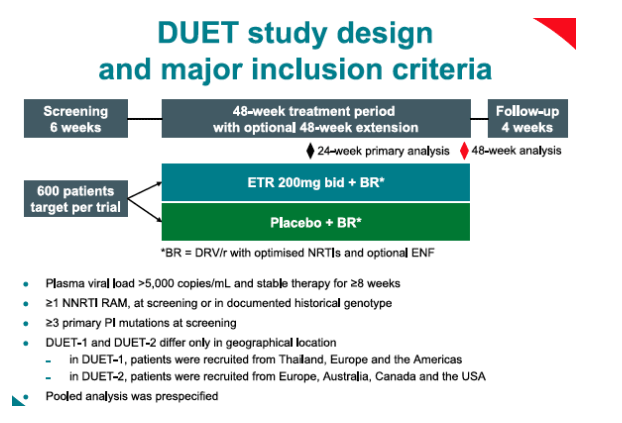
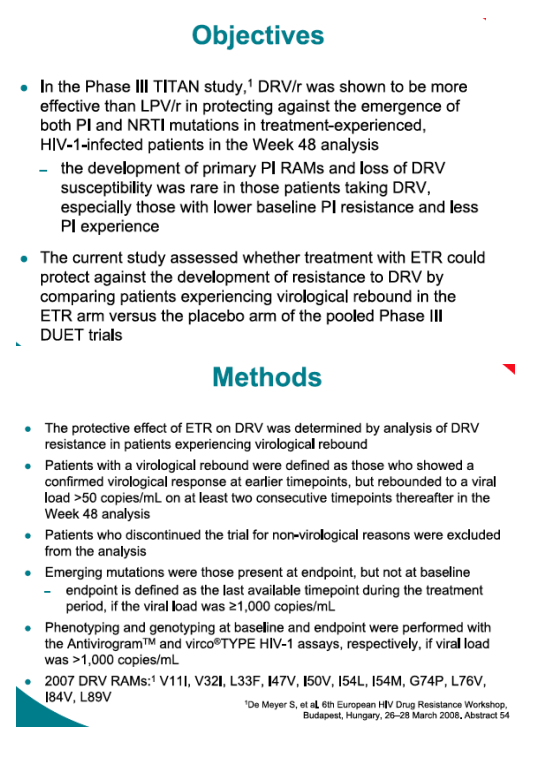
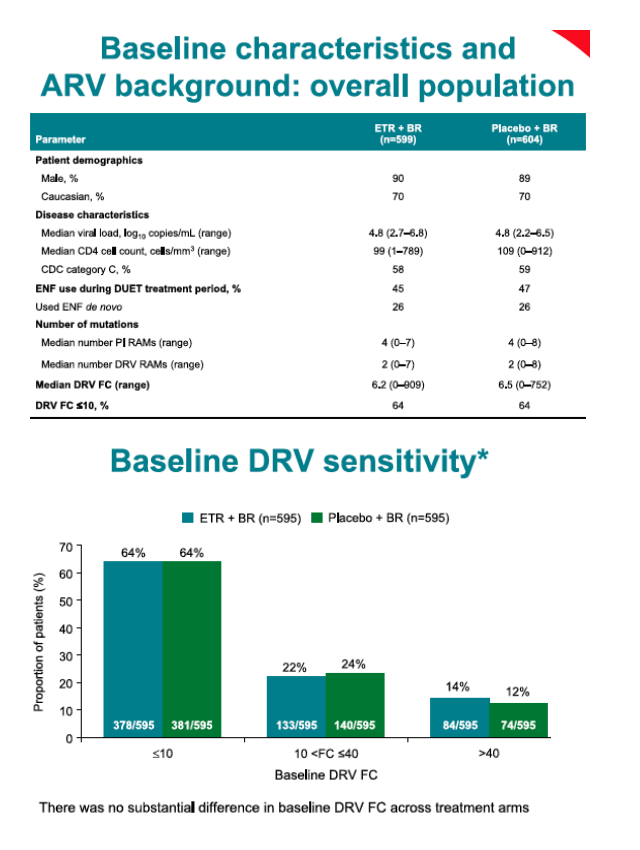
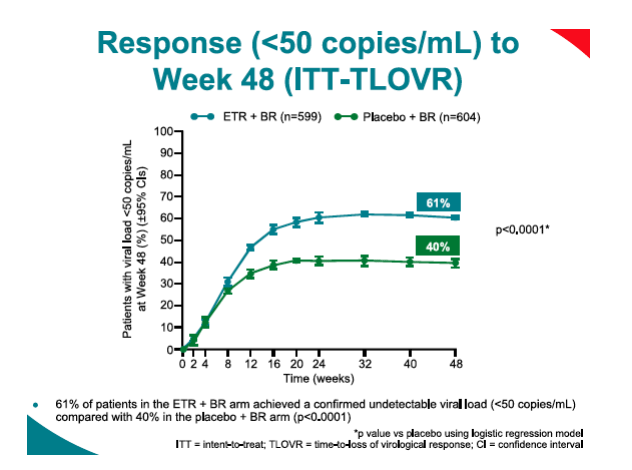
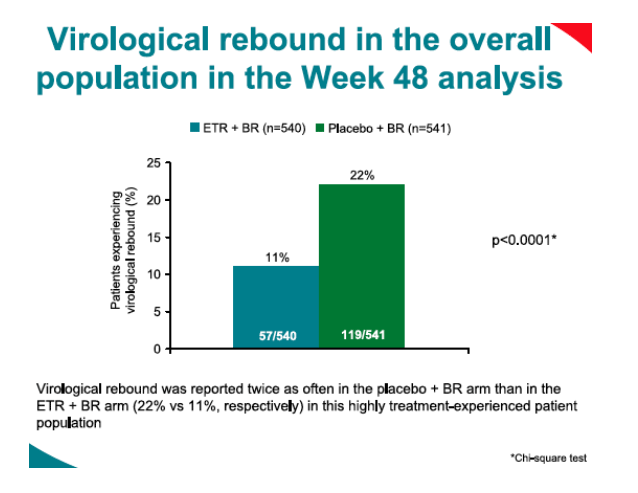
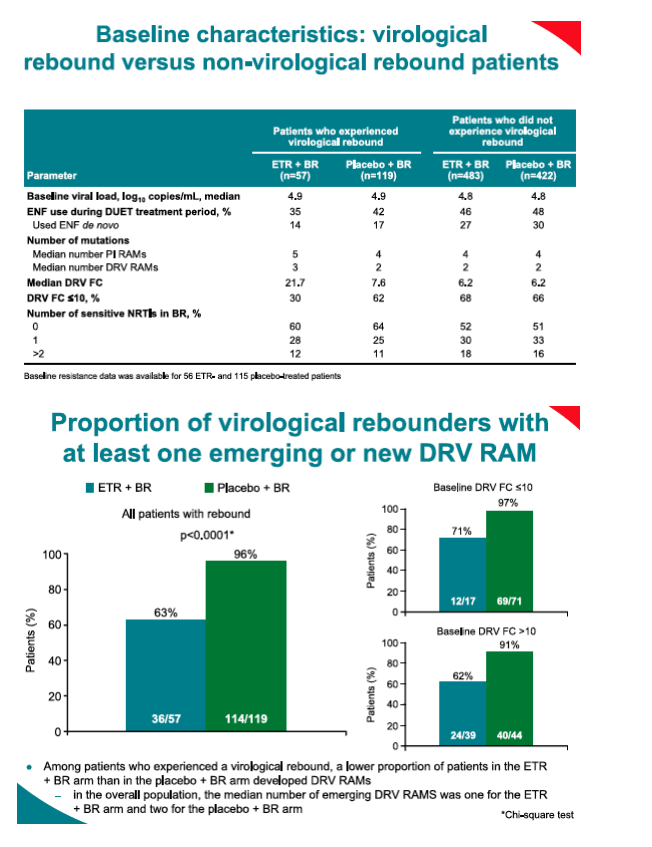
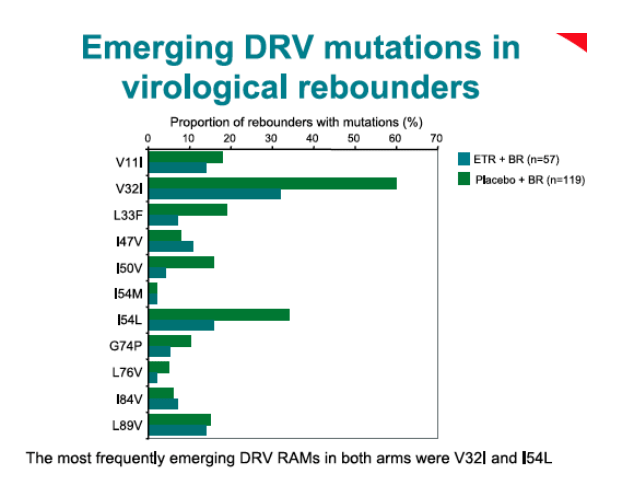
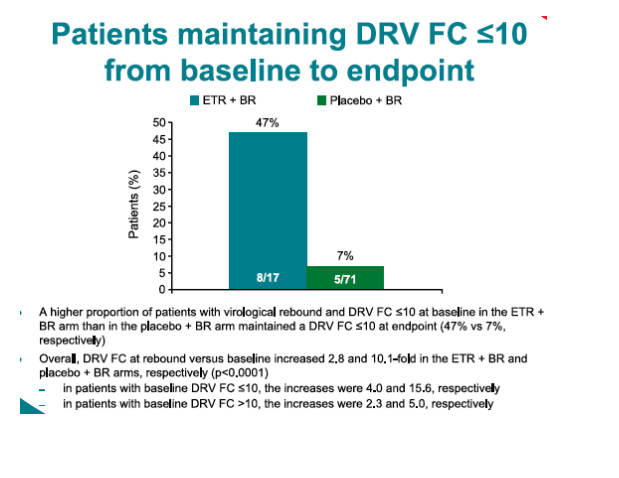
|
| |
|
 |
 |
|
|